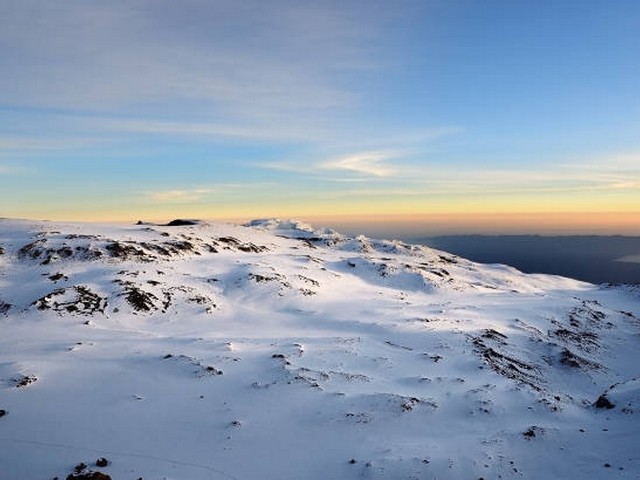Kilimanjaro Photography Challenges and How to Overcome Them
Capturing the Majesty of Kilimanjaro: A Photographer’s Journey
Mount Kilimanjaro, standing as a beacon of magnificence in Tanzania, offers more than just a trekking adventure; it presents a paradise for photographers aiming to capture the beauty of nature’s pinnacle. However, photographing this majestic mountain comes with its unique set of challenges. Whether you’re a seasoned photographer or a hobbyist, understanding these challenges and knowing how to overcome them can transform your photographic expedition into a story worth telling. Join us, the Kilimanjaro Centre for Trekking and Ecotourism (KCTE), as we guide you through mastering the art of Kilimanjaro photography.
Understanding the Photographic Terrain of Kilimanjaro
1. Diverse Climatic Zones
Kilimanjaro is not just a mountain; it’s a mosaic of ecological systems, each with its own climatic conditions. From the lush rainforests at its base to the alpine desert and finally the arctic summit, photographers need to be prepared for varying light conditions and weather patterns.
How to Overcome This:
- Research and Prepare: Before your climb, understand the typical weather conditions associated with each altitude level. This knowledge will help you select the right gear and settings for your camera.
- Flexible Gear Selection: Equip yourself with a variety of lenses. A wide-angle lens can capture expansive landscapes, while a telephoto lens is perfect for wildlife and distant details.
2. Lighting Conditions
The equatorial position of Kilimanjaro can lead to harsh lighting conditions, particularly around midday. Morning and late afternoon provide the golden hours for photographers, offering softer light and dramatic shadows.
How to Overcome This:
- Timed Shots: Plan to capture most of your photographs during the early mornings and late afternoons. Not only will the lighting be more favorable, but these times usually provide more dramatic and colorful skies.
- Use of Filters: Polarizing filters can help manage reflections and enhance the natural blues and greens of the skies and vegetation, whereas ND filters are great for managing harsh sunlight.
3. Altitude Effects on Equipment
High altitudes can affect not just the photographer but also the photography equipment. Battery drain and lens fogging are common issues that can hinder your ability to capture the perfect shot.
How to Overcome This:
- Spare Batteries: Always carry extra batteries that are fully charged and keep them close to your body to keep them warm.
- Gear Maintenance: Use silica gel packs to absorb moisture and prevent your camera and lenses from fogging up.
Essential Kilimanjaro Photography Tips
4. Composition Techniques for Captivating Images
Kilimanjaro offers vast landscapes that can sometimes seem overwhelming through a lens. Learning how to effectively compose your shots will make a significant difference in your photographic output.
How to Overcome This:
- Rule of Thirds: This classic composition technique helps in balancing your images. Place points of interest along the lines or their intersections to create more engaging photos.
- Look for Layers and Textures: The varying terrains provide a chance to play with layers (foreground, middle ground, background) and textures (rock formations, ice caps).
5. Capturing the Flora and Fauna
The biodiversity on Kilimanjaro is as rich as its landscapes. From exotic birds to unique plants, capturing these elements requires patience and a quick shutter.
How to Overcome This:
- Longer Lenses: A lens with a focal length of at least 200mm is recommended for wildlife to capture detailed shots from a distance.
- Steady Hands: Use tripods or monopods to stabilize your camera, especially in windy conditions or lower light scenarios.
Engaging with Local Culture
Photography on Kilimanjaro is not limited to landscapes and wildlife. The rich culture of the Chagga people, native to the region, adds a profound depth to your narrative.
How to Overcome This:
- Cultural Sensitivity: Always ask for permission before taking photos of local people or their homes. Engage with your subjects and share the stories behind your photographs.
FAQs: Enhancing Your Kilimanjaro Photography Experience
Q1: What is the best time of year for photography on Kilimanjaro?
The best times are during the dry seasons, from June to October and from December to March, when the skies are clearer and the visibility is better.
Q2: How do I protect my camera from the dust and cold?
Use protective covers and keep your gear in sealed bags when not in use. Avoid changing lenses in dusty areas.
Q3: Can I charge my camera batteries during the trek?
While charging opportunities are limited, some camps may have charging facilities for a fee. It’s best to bring sufficient batteries to last the entire trek.
Capture the Crown of Africa with KCTE
Embracing these challenges and tips will undoubtedly enhance your photographic journey to Kilimanjaro. At Kilimanjaro Centre for Trekking and Ecotourism (KCTE), we are committed to providing you with an unforgettable adventure that captures the essence of this iconic mountain through your lens. Book your Kilimanjaro climbing experience with us and let every photograph you take tell a story of conquest, beauty, and inspiration. Join us in documenting the splendor of Kilimanjaro. Let’s create breathtaking memories together!
Capture the spirit of Africa. Capture Kilimanjaro with KCTE.




